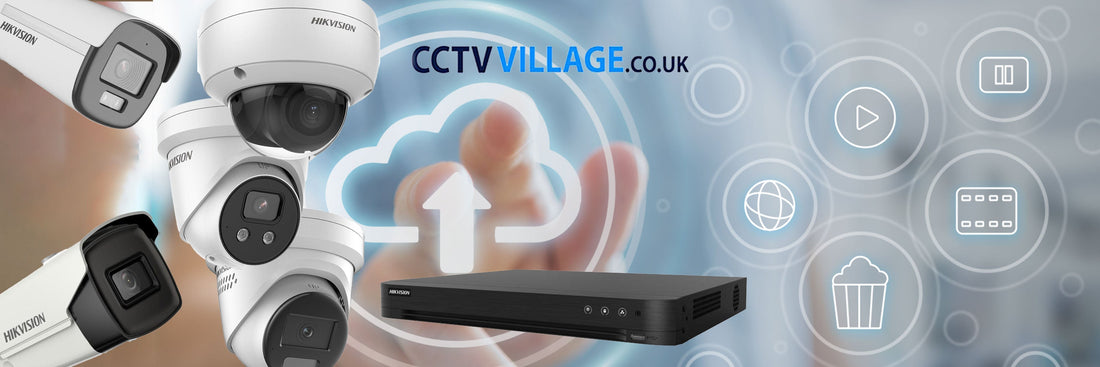The evolution of television and video recording technologies has drastically transformed how we consume media. A significant advancement in this realm is the advent of Cloud DVR (Digital Video Recorder) systems. Cloud DVR combines the traditional functionalities of DVRs with the power of cloud computing, offering users a flexible and robust solution for recording and managing their favorite content. This article delves into the intricacies of Cloud DVR, exploring its architecture, benefits, use cases, and future trends.
1. What is Cloud DVR?
Cloud DVR, or Network DVR (nDVR), is a digital video recording service that allows users to record live television programs to the cloud rather than to a local hard drive or set-top box. This service is provided by cable or streaming companies and enables users to store their recorded content on remote servers, making it accessible from any internet-connected device.
Key Features:
- Remote Storage: Recorded content is stored on cloud servers, freeing users from the limitations of local storage devices.
- Multi-Device Access: Users can watch their recorded content on various devices, including smartphones, tablets, smart TVs, and computers.
- Scalability: Storage capacity can be easily expanded, and users can often record multiple shows simultaneously.
2. How Does Cloud DVR Work?
Architecture:
a. Content Acquisition: Television programs are captured from broadcast feeds, satellite, or cable systems by the service provider.
b. Encoding: The acquired content is encoded into a digital format suitable for streaming and storage.
c. Storage: Encoded content is stored in the provider’s cloud infrastructure. Redundant storage ensures data integrity and availability.
d. Metadata Management: Metadata (program information, thumbnails, etc.) is associated with the recorded content for easy search and retrieval.
e. Streaming: When a user plays a recorded program, it is streamed from the cloud server to their device over the internet.
Workflow:
a. Recording Request: The user schedules a recording through the provider’s interface (e.g., TV guide, app).
b. Recording: At the scheduled time, the provider captures the broadcast and saves it to the cloud.
c. Playback: The user can access and stream the recorded content anytime via the provider’s app or website.
3. Benefits of Cloud DVR
a. Flexibility and Convenience
- Access Anywhere: Users can watch their recordings from any location with internet access, not just from their home.
- Multiple Devices: Recorded content can be viewed on various devices, providing flexibility in how and where users watch their shows.
b. Scalability
- increased Storage: Cloud DVR services can offer virtually unlimited storage, unlike traditional DVRs that are constrained by hard drive capacity.
- Simultaneous Recordings: Users can record multiple programs at the same time without the conflicts typically encountered with local DVRs.
c. Reduced Hardware Requirements
- No Need for Local Storage: Users don’t need physical DVR hardware with hard drives, which can fail or become obsolete.
-Simplified Setup: The absence of physical DVRs simplifies setup and maintenance, often reducing the number of devices required in a home entertainment system.
d. Enhanced Features
- Automated Updates: Cloud DVRs can receive software updates without user intervention, providing new features and improvements seamlessly.
- Advanced Search and Recommendations: Integration with advanced metadata and machine learning allows for better search capabilities and content recommendations.
4. Use Cases
a. Residential Use
Households use Cloud DVR to record live TV shows, movies, sports events, and news broadcasts. The flexibility to record and watch at any time suits the varying schedules of different family members.
b. On-Demand Viewing
Cloud DVR complements on-demand services by allowing users to record live content for later viewing, providing a blend of live TV and on-demand flexibility.
c. Content Archiving
For users who wish to keep a library of their favorite shows and movies, Cloud DVR provides a means to store and organize content long-term without worrying about local storage limits.
d. Remote Access
Travelers or individuals who spend time in multiple locations can access their recorded content from anywhere, ensuring they don’t miss their favorite programs.
5. Challenges and Considerations
a. Internet Dependence
Cloud DVR relies on internet connectivity for both recording and playback. Poor or unreliable internet connections can disrupt the user experience.
b. Data Privacy and Security
Storing recordings on remote servers raises concerns about data privacy and security. Providers must implement robust security measures to protect user content.
c. Licensing and Content Restrictions
Content providers and broadcasters may impose restrictions on what can be recorded and how long recordings can be retained. Licensing agreements can affect the availability of certain features.
d. Cost
Cloud DVR services may come with subscription fees or additional costs for extra storage, which can add to the user’s overall expenses for television services.
6. Future Trends
a. Integration with AI
AI technologies can enhance Cloud DVR systems by offering smarter recording suggestions, content summarization, and more personalized viewing experiences.
b. Enhanced User Interfaces
Future developments may focus on improving the user interface for easier content discovery, better integration with live TV and on-demand services, and more intuitive controls.
c. Edge Computing
Incorporating edge computing can reduce latency and improve performance by processing and storing data closer to the end of the user, rather than relying solely on distant cloud servers.
d. Increased Interactivity
Enhanced interactivity, such as real-time content recommendations during live broadcasts and integrated social features, can offer a more engaging viewing experience.
7. Conclusion
Cloud DVR represents a significant leap forward in digital video recording technology, combining the flexibility of cloud storage with the familiarity of traditional DVR functionalities. As internet speeds and reliability improve, and as content consumption habits continue to evolve, Cloud DVR is likely to become an integral part of how we watch television, providing users with unprecedented control over their viewing experiences.
By understanding its features, benefits, challenges, and future potential, consumers and industry professionals can better navigate the rapidly changing landscape of media consumption.

